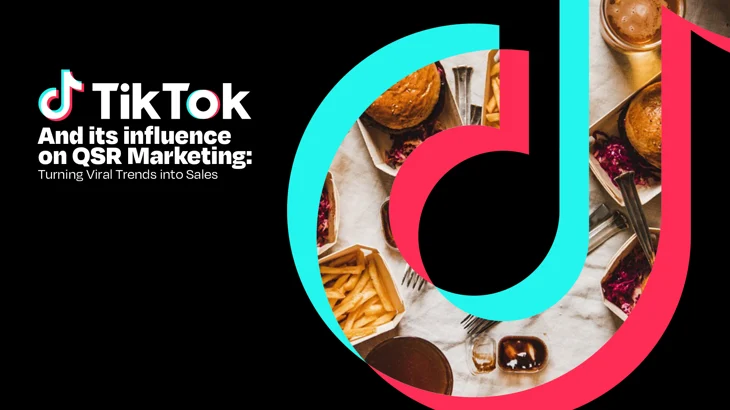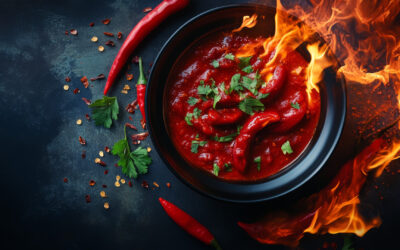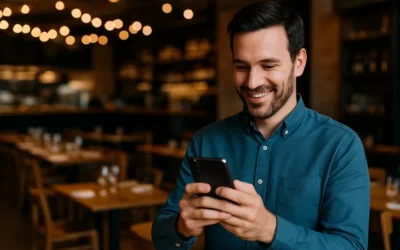Why QSRs Are Thriving on TikTok
Unlike traditional advertising, TikTok thrives on authenticity and engagement. Consumers, particularly Gen Z and Millennials, respond more to organic, user-generated content than highly polished commercials. The fast-paced nature of TikTok aligns perfectly with the quick-service industry—highlighting instant gratification, visual appeal, and shareable experiences.
Here are a few reasons why QSR brands are thriving on TikTok:
- Virality Drives Foot Traffic: A single viral food trend can lead to sold-out products, long queues, and massive in-store engagement. A great example is the Greggs Vegan Sausage Roll, which went viral in the UK, leading to record-breaking sales and increased footfall.
- Influencer and Creator Collaborations: QSRs are partnering with TikTok creators to drive engagement. For example, McDonald’s UK collaborated with well-known influencers to promote its McSpicy Challenge, encouraging customers to try the spicy burger and share their reactions online.
- Hashtag Challenges for Brand Awareness: KFC Ireland launched the #KFCBitesChallenge, where TikTok users showed off their best bite reaction to KFC’s new chicken bites, leading to a massive increase in user generated content and online engagement.
- Engaging and Fun Content: Nando’s UK has embraced TikTok by sharing humorous behind the scenes videos, customer experiences, and reaction clips, helping the brand stay relevant and connect with younger audiences.
- Romayo’s, Growing its audience: Romayo’s in Ireland has turned TikTok into its playground, blending humour and mouth-watering food content to captivate audiences. One of their standout stars is ‘Fit Guy’, an entertaining character who mixes comedy with exciting food deals and promotions. Alongside ‘Larmurts‘, hilarious skits and enthusiastic energy they have driven viral engagement and increased foot traffic to their outlets. By making fast food fun, Romayo’s has positioned itself as a must-visit destination for TikTok users hungry for both laughs and great deals.
The Rise of TikTok-Driven Menu Items
One of the most exciting TikTok phenomena in QSR marketing is how viral trends inspire new menu items. Some notable examples:
- The McDonald’s UK Chicken Big Mac: A limited-time product that gained massive popularity after social media buzz, with TikTokers driving anticipation before its launch.
- Burger King’s Halloumi Fries (UK & Ireland): A highly requested item that gained traction thanks to TikTok food influencers sharing their taste tests.
- Starbucks’ Secret Menu Trends: TikTok has made “secret menu” drinks mainstream, with UK Starbucks customers ordering custom drinks like the White Mocha with Raspberry Swirl, inspired by viral videos.
How QSRs Can Leverage TikTok for Sales Growth
For QSRs looking to make the most of TikTok marketing, here are key strategies to follow:
1. Jump on Trends Early
Food trends on TikTok move fast. QSRs need to monitor emerging trends and quickly adapt their menus, promotions, or content to align with viral conversations.
2. Collaborate with TikTok Influencers
Micro and macro influencers play a crucial role in amplifying brand awareness. Partnering with food influencers can introduce products to new audiences authentically.
3. Encourage User-Generated Content (UGC)
Encouraging customers to create content, whether through challenges, reviews, or experiences, can drive organic engagement and boost brand credibility.
4. Utilise Hashtag Challenges & Interactive Content
Custom hashtag campaigns encourage participation. For example, Subway UK’s #SubwayChallenge encouraged customers to show off their favourite sandwich combinations, leading to increased brand engagement.
5. Leverage Paid TikTok Ads for Targeted Reach
Beyond organic content, QSRs can use TikTok’s ad platform to run targeted promotions, geo-fenced deals, and special offers aimed at increasing store visits and app engagement.
The Future of TikTok and QSR Marketing
TikTok’s impact on QSRs is only growing. With the rise of AI-driven content, personalised recommendations, and even augmented reality (AR) filters for ordering experiences, the future of QSR marketing will continue to evolve with TikTok’s innovations.
QSRs that embrace authenticity, interactivity, and speed in adapting to TikTok trends will gain a competitive edge in the fast-food industry. Whether through viral menu items, influencer partnerships, or hashtag campaigns, leveraging TikTok effectively can translate directly into higher sales, brand loyalty, and cultural relevance.
So if your QSR brand isn’t on TikTok yet, now is the time to start. The right strategy can turn a simple food item into a viral sensation, driving massive engagement and real revenue growth. The future of fast food is digital, and TikTok is leading the way, one viral trend at a time.




